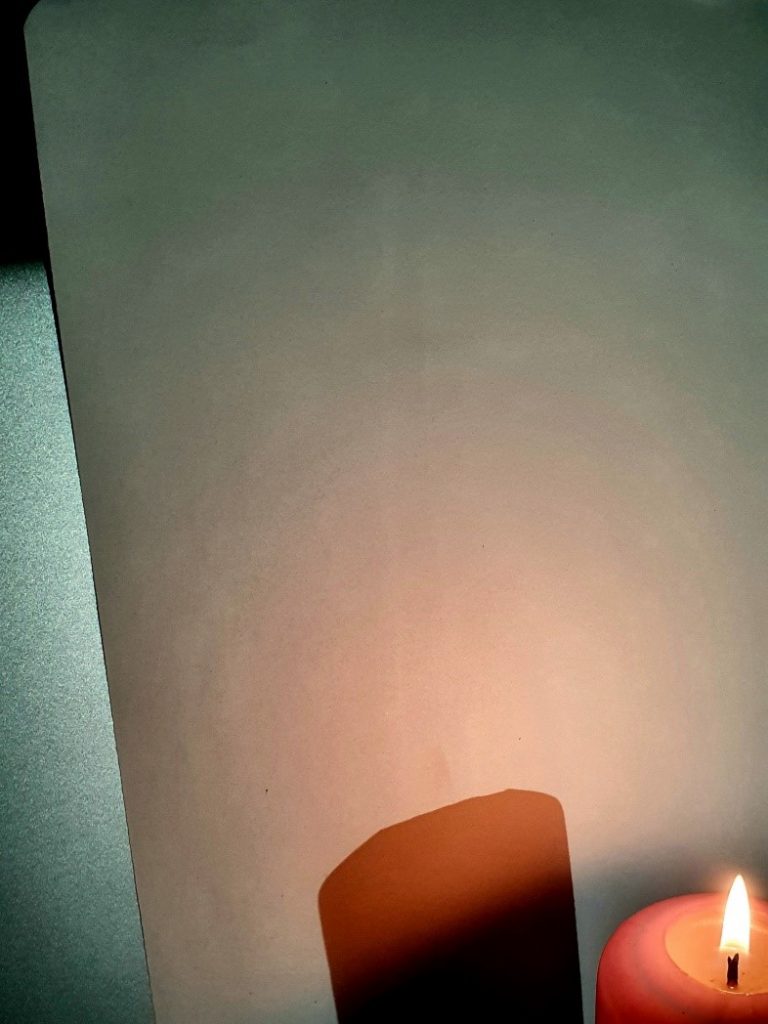Sarah D.
It’s Christmas time!! Which means candles. Like…a lot…literally everywhere. Consequently, many candle-related questions come up, such as “Which scent smells the best?”, “Which color should I buy?”, “Can I gift mom with even more candles this year?”. Those are the normal type of questions an average human asks. As scientists, we ask wonderful questions like “How hot is a flame?”, “Can I separate the different chemical components of wax?”, “Do flames have shadows?”. That is the question I want to answer. So, I decided to go on the Hunt for the Shadow of the Flame. Is it real? If it exists, how does it work?
To demonstrate and help visualize the answer, I conducted an experiment. If you want to reconstruct the experiment you will need a candle, a white sheet of paper, a bright flashlight, and a match to light the candle (unless you want to try it with flint and steel, which I don’t recommend). Firstly, you must darken the room to see results. Then you set the lit candle about 5 to 10 centimeters in front of the white sheet of paper. Take a flashlight that is brighter than the flame and shine it on flame. Now, you will see that the flame itself has a faint shadow, and the air above the candle also has a shadow. It looks like this:

Since the flashlight from the phone wasn’t bright enough, the shadows aren’t very visible. Therefore, I drew a picture of what the shadow is supposed to look like:

Why do these shadows appear?
I’ll start by explaining the shadow of the air above the fire: It’s important to know that the candle heats the air above it. The surrounding air remains cold, though. Molecules within hot air move faster than molecules in cold air. Because of the fast-moving molecules, the density in warm air is less than the density in cold air. That means when a light ray moves from the colder air into the hotter air, it goes through a change in the refractive index. (Sarah, what in the gods of physics, is a refractive index?) When a ray of light passes from one medium into another, it’s called a change in the refractive index. It’s important to know, that the light doesn’t get refracted inside the new medium but at the surface of the new medium. In our case, hot air is considered a different medium than cold air, since it has a different density. That means some of the light, which passes through the air above the flame, gets refracted (bounces off and gets redirected) and a shadow appears.
Next, I’ll explain the shadow of the flame: Burning the wick results in hot ionized gas, burnt carbon fibers, burnt oxygen molecules, and burnt fuel. The resulting substance is also called soot. The soot particles refract the rays of light from the flashlight, forming a faint shadow. Due to the flame being hot, the change of RI also influences the path of the light.
To sum everything up: Fire produces a faint shadow, and you can also see the hot air above the flame forming a slight shadow. This is because of the change in RI, which causes the refraction of some of the light. The flame itself consists of burning particles. These particles also redirect the path of the flames.
